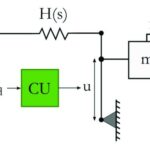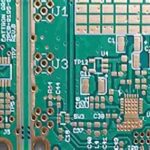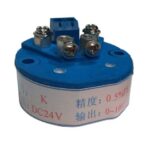What is Electronics Environmental Testing?
Electronics environmental testing is a series of tests performed on electronic components, devices, and systems to evaluate their ability to function properly and reliably under various environmental conditions. These tests simulate the real-world conditions that the products may encounter during their lifecycle, including storage, transportation, and operation.
The primary goal of electronics environmental testing is to identify potential weaknesses or failures in the design, materials, or manufacturing process, and to ensure that the products meet the required standards and specifications. By conducting these tests, manufacturers can improve the quality, reliability, and durability of their products, and reduce the risk of failures or malfunctions in the field.
Categories of Electronics Environmental Testing
Electronics environmental testing can be broadly categorized into three main types:
- Climatic Testing
- Mechanical Testing
- Electromagnetic Compatibility (EMC) Testing
Each category focuses on different aspects of the product’s performance and reliability under specific environmental conditions. Let’s explore each category in more detail.
Climatic Testing
Climatic testing evaluates the ability of electronic products to function properly under various temperature, humidity, and pressure conditions. These tests simulate the environmental conditions that the products may encounter during storage, transportation, and operation.
Some common climatic tests include:
- Temperature Cycling: This test exposes the product to alternating high and low temperatures to evaluate its ability to withstand thermal stress and to identify any potential failures due to thermal expansion or contraction.
- Humidity Testing: This test exposes the product to high humidity levels to evaluate its ability to withstand moisture ingress and to identify any potential failures due to corrosion or electrical shorts.
- Altitude Testing: This test simulates the low pressure conditions that the product may encounter during high-altitude operation or transportation, to evaluate its ability to function properly and to identify any potential failures due to reduced air density or pressure.
Mechanical Testing
Mechanical testing evaluates the ability of electronic products to withstand various physical stresses and forces during their lifecycle. These tests simulate the mechanical shocks, vibrations, and loads that the products may encounter during transportation, handling, and operation.
Some common mechanical tests include:
- Vibration Testing: This test exposes the product to controlled vibrations of varying frequencies and amplitudes to evaluate its ability to withstand vibration-induced stresses and to identify any potential failures due to mechanical resonance or fatigue.
- Shock Testing: This test exposes the product to sudden, high-acceleration impacts to evaluate its ability to withstand mechanical shocks and to identify any potential failures due to structural damage or component dislodgement.
- Drop Testing: This test simulates the accidental drops or impacts that the product may encounter during handling or transportation, to evaluate its ability to withstand these events and to identify any potential failures due to mechanical damage or component failure.
Electromagnetic Compatibility (EMC) Testing
EMC testing evaluates the ability of electronic products to operate properly in the presence of electromagnetic interference (EMI) and to avoid generating excessive EMI that may affect other nearby devices. These tests ensure that the products comply with the relevant EMC standards and regulations.
Some common EMC tests include:
- Radiated Emissions Testing: This test measures the electromagnetic emissions generated by the product to ensure that they do not exceed the specified limits and cause interference to other devices.
- Conducted Emissions Testing: This test measures the electromagnetic emissions conducted through the power supply or signal lines of the product to ensure that they do not exceed the specified limits and cause interference to other devices.
- Immunity Testing: This test evaluates the ability of the product to function properly in the presence of various types of electromagnetic interference, such as radio frequency (RF) fields, electrostatic discharges (ESD), and electrical fast transients (EFT).
Different Types of Electronics Environmental Tests
Now that we have covered the main categories of electronics environmental testing, let’s explore some of the specific types of tests that fall under each category.
Climatic Tests
- Temperature Cycling Test
- Test Conditions:
- Temperature Range: -40°C to +85°C
- Number of Cycles: 100 cycles
- Dwell Time: 30 minutes at each extreme
- Purpose: To evaluate the product’s ability to withstand thermal stress and to identify any potential failures due to thermal expansion or contraction.
- Humidity Test
- Test Conditions:
- Temperature: +85°C
- Relative Humidity: 85%
- Duration: 1000 hours
- Purpose: To evaluate the product’s ability to withstand moisture ingress and to identify any potential failures due to corrosion or electrical shorts.
- Thermal Shock Test
- Test Conditions:
- Temperature Range: -55°C to +125°C
- Transfer Time: 10 seconds
- Dwell Time: 30 minutes at each extreme
- Number of Cycles: 50 cycles
- Purpose: To evaluate the product’s ability to withstand rapid temperature changes and to identify any potential failures due to thermal stress or component failure.
- Salt Fog Test
- Test Conditions:
- Temperature: +35°C
- Salt Concentration: 5% NaCl solution
- Duration: 96 hours
- Purpose: To evaluate the product’s ability to withstand corrosive environments and to identify any potential failures due to corrosion or electrical shorts.
Mechanical Tests
- Random Vibration Test
- Test Conditions:
- Frequency Range: 10 Hz to 2000 Hz
- Power Spectral Density (PSD): 0.04 g²/Hz
- Duration: 4 hours per axis (3 axes)
- Purpose: To evaluate the product’s ability to withstand vibration-induced stresses and to identify any potential failures due to mechanical resonance or fatigue.
- Sine Vibration Test
- Test Conditions:
- Frequency Range: 10 Hz to 500 Hz
- Acceleration: 1.5 g
- Sweep Rate: 1 octave/minute
- Duration: 1 sweep up and down per axis (3 axes)
- Purpose: To evaluate the product’s ability to withstand vibration at specific frequencies and to identify any potential failures due to mechanical resonance or fatigue.
- Mechanical Shock Test
- Test Conditions:
- Peak Acceleration: 50 g
- Pulse Duration: 11 ms
- Shock Shape: Half-sine
- Number of Shocks: 3 shocks per axis (6 axes)
- Purpose: To evaluate the product’s ability to withstand sudden, high-acceleration impacts and to identify any potential failures due to structural damage or component dislodgement.
- Drop Test
- Test Conditions:
- Drop Height: 1.2 meters
- Number of Drops: 6 drops (1 on each face, edge, and corner)
- Purpose: To evaluate the product’s ability to withstand accidental drops or impacts during handling or transportation and to identify any potential failures due to mechanical damage or component failure.
EMC Tests
- Radiated Emissions Test
- Test Conditions:
- Frequency Range: 30 MHz to 1 GHz
- Measurement Distance: 3 meters
- Limit: As per relevant EMC standard (e.g., FCC Part 15, CISPR 22)
- Purpose: To measure the electromagnetic emissions generated by the product and to ensure that they do not exceed the specified limits and cause interference to other devices.
- Conducted Emissions Test
- Test Conditions:
- Frequency Range: 150 kHz to 30 MHz
- Measurement Point: AC mains power input
- Limit: As per relevant EMC standard (e.g., FCC Part 15, CISPR 22)
- Purpose: To measure the electromagnetic emissions conducted through the power supply lines of the product and to ensure that they do not exceed the specified limits and cause interference to other devices.
- Electrostatic Discharge (ESD) Test
- Test Conditions:
- Discharge Voltage: Up to 8 kV contact, 15 kV air
- Discharge Network: 150 pF / 330 Ω
- Number of Discharges: 10 discharges per polarity
- Purpose: To evaluate the product’s ability to withstand ESD events and to identify any potential failures or malfunctions due to ESD-induced damage or upset.
- Electrical Fast Transient (EFT) Test
- Test Conditions:
- Pulse Voltage: Up to 2 kV
- Pulse Repetition Frequency: 5 kHz or 100 kHz
- Burst Duration: 15 ms
- Burst Period: 300 ms
- Purpose: To evaluate the product’s ability to withstand fast transient disturbances on power supply or signal lines and to identify any potential failures or malfunctions due to EFT-induced damage or upset.

Frequently Asked Questions (FAQ)
- Q: Why is electronics environmental testing important?
A: Electronics environmental testing is important to ensure that electronic products can function reliably and safely under various environmental conditions throughout their lifecycle. It helps identify potential weaknesses or failures in the design, materials, or manufacturing process, and ensures that the products meet the required standards and specifications. - Q: What are the main categories of electronics environmental testing?
A: The main categories of electronics environmental testing are: - Climatic Testing: Evaluates the product’s ability to function under various temperature, humidity, and pressure conditions.
- Mechanical Testing: Evaluates the product’s ability to withstand physical stresses and forces, such as vibration, shock, and drop.
- Electromagnetic Compatibility (EMC) Testing: Evaluates the product’s ability to operate properly in the presence of electromagnetic interference and to avoid generating excessive interference.
- Q: What is the purpose of temperature cycling tests?
A: The purpose of temperature cycling tests is to evaluate the product’s ability to withstand thermal stress and to identify any potential failures due to thermal expansion or contraction. These tests expose the product to alternating high and low temperatures to simulate the thermal conditions it may encounter during its lifecycle. - Q: What is the difference between random vibration and sine vibration tests?
A: Random vibration tests expose the product to a broad spectrum of frequencies simultaneously, simulating real-world vibration environments. Sine vibration tests, on the other hand, expose the product to a single frequency at a time, sweeping through a range of frequencies. Random vibration tests are more representative of real-world conditions, while sine vibration tests are useful for identifying specific resonance frequencies. - Q: What are the common EMC tests performed on electronic products?
A: The common EMC tests performed on electronic products include: - Radiated Emissions Test: Measures the electromagnetic emissions generated by the product to ensure they do not exceed specified limits.
- Conducted Emissions Test: Measures the electromagnetic emissions conducted through the power supply or signal lines of the product to ensure they do not exceed specified limits.
- Immunity Testing: Evaluates the product’s ability to function properly in the presence of various types of electromagnetic interference, such as ESD and EFT.
Conclusion
Electronics environmental testing is a vital process in the development and manufacturing of reliable and high-quality electronic products. By subjecting products to various climatic, mechanical, and EMC tests, manufacturers can identify potential issues and ensure that their products meet the required standards and specifications. This comprehensive article has provided an in-depth look at the definition, categories, and different types of tests involved in electronics environmental testing. By understanding these concepts, manufacturers can effectively design and test their products to withstand the rigors of real-world environments and deliver reliable performance to their customers.









